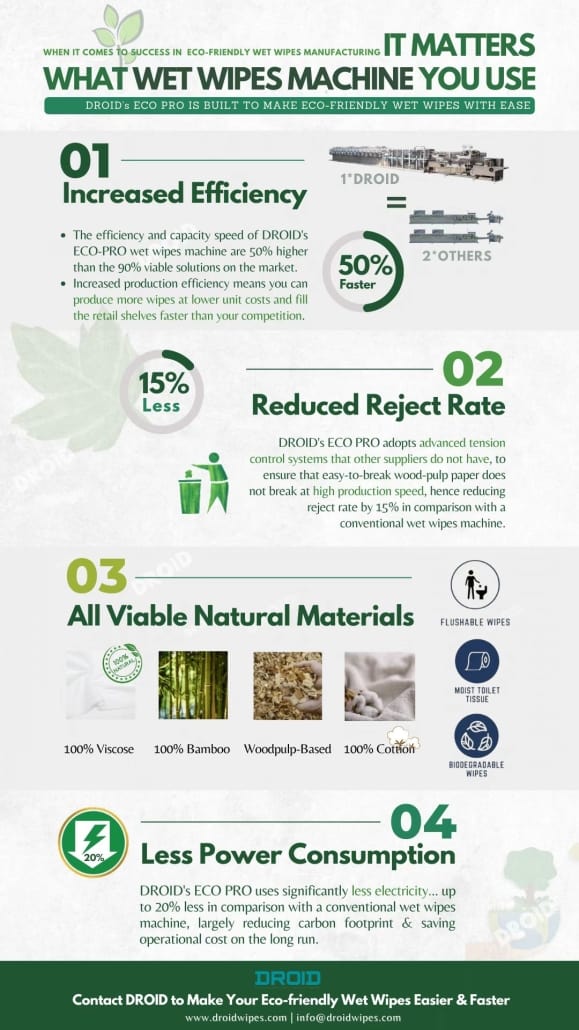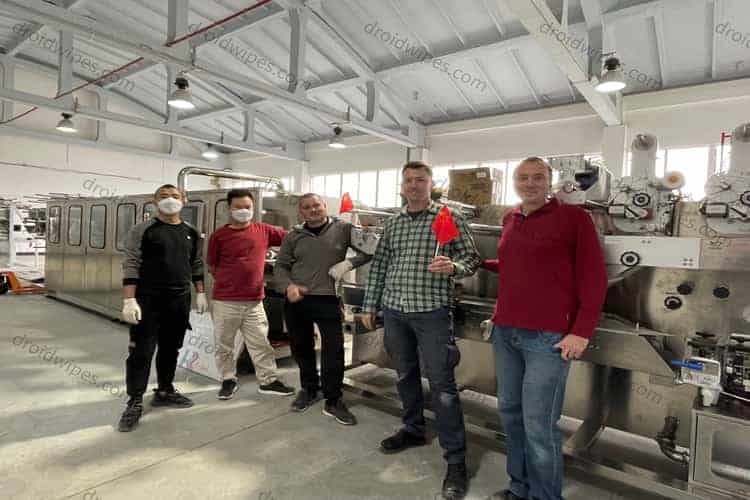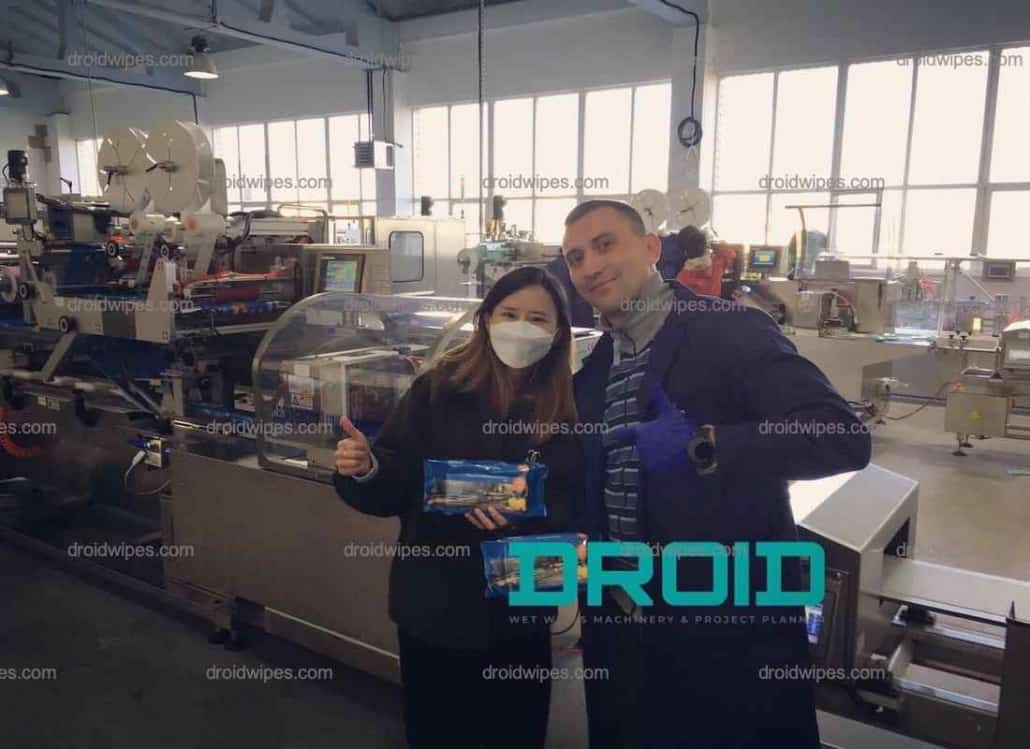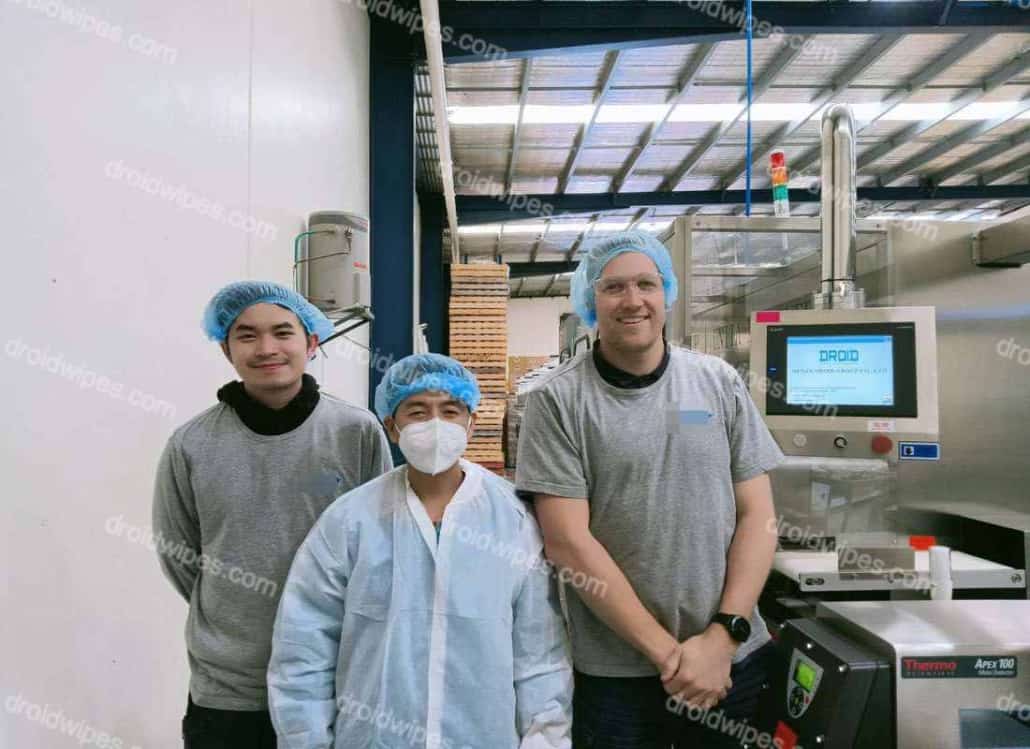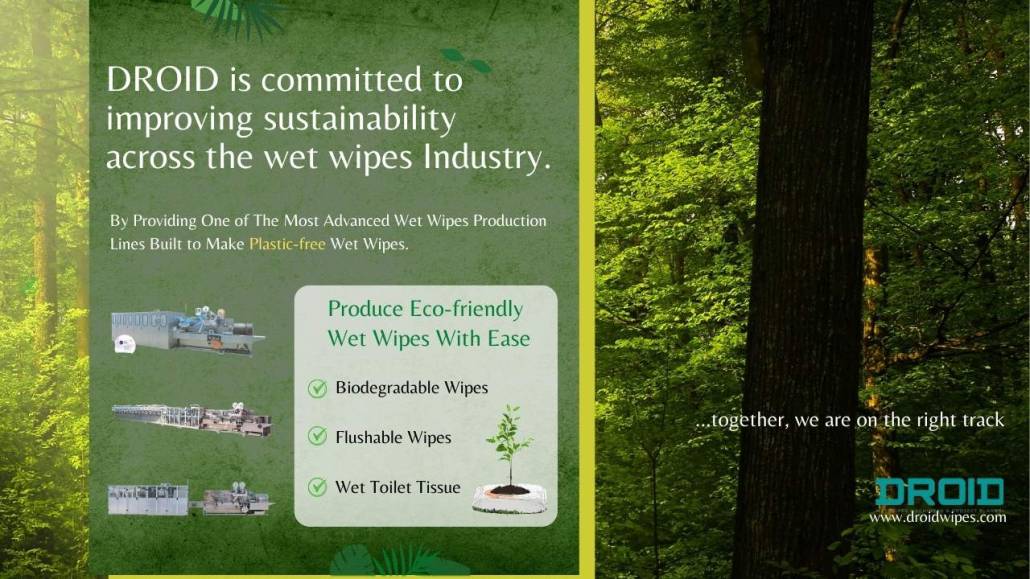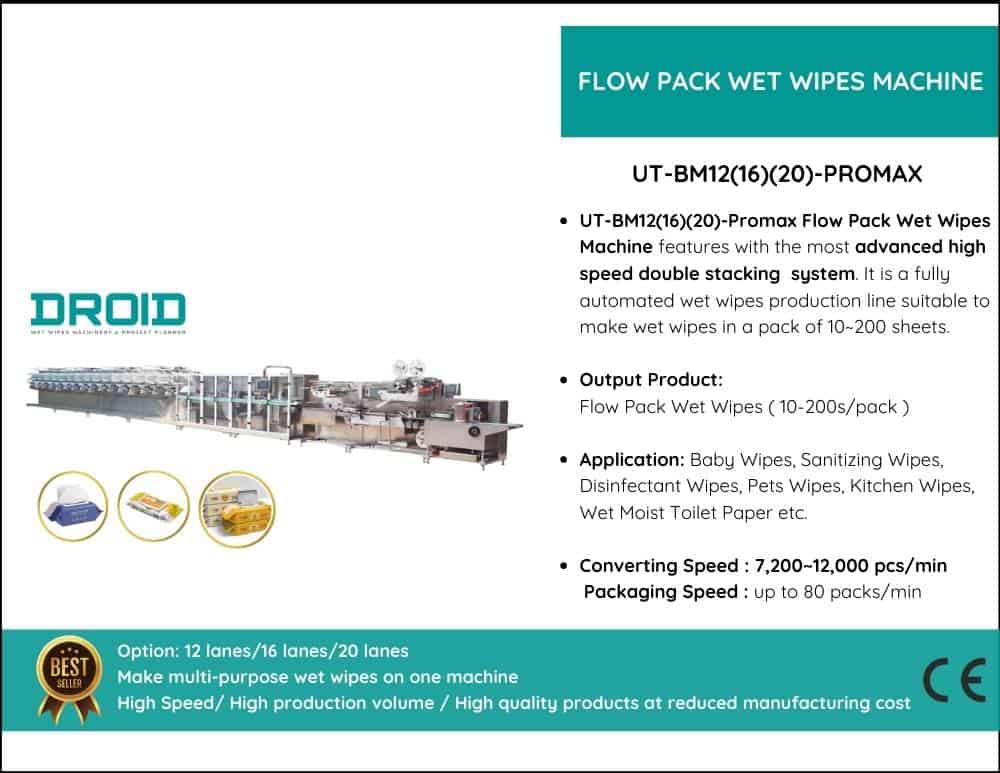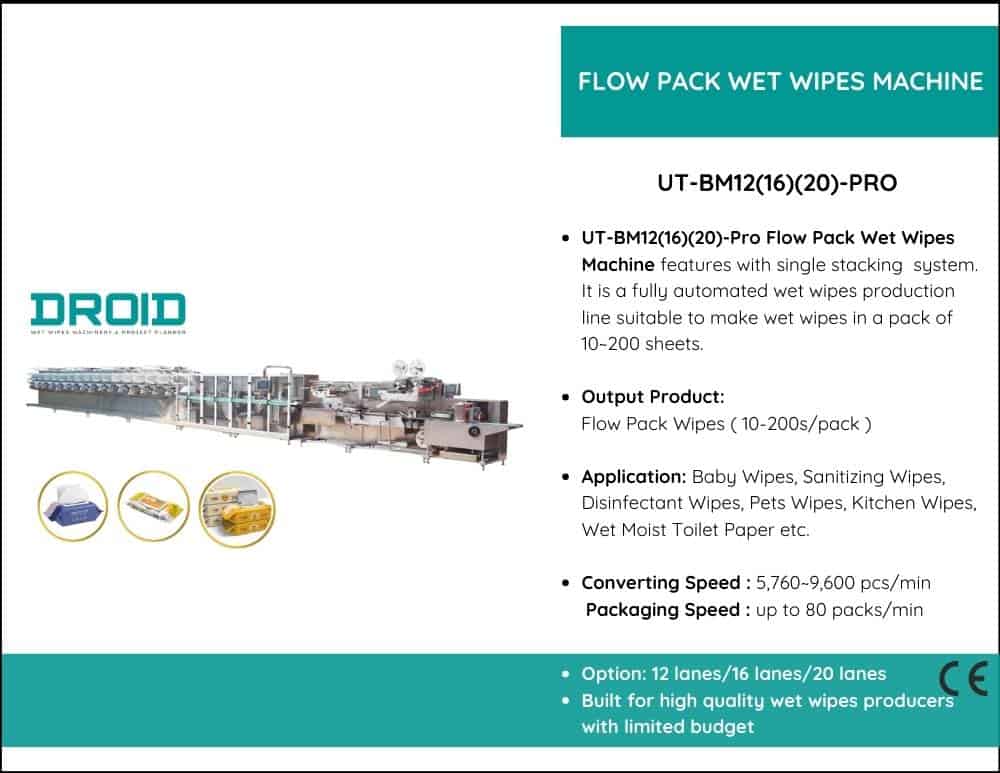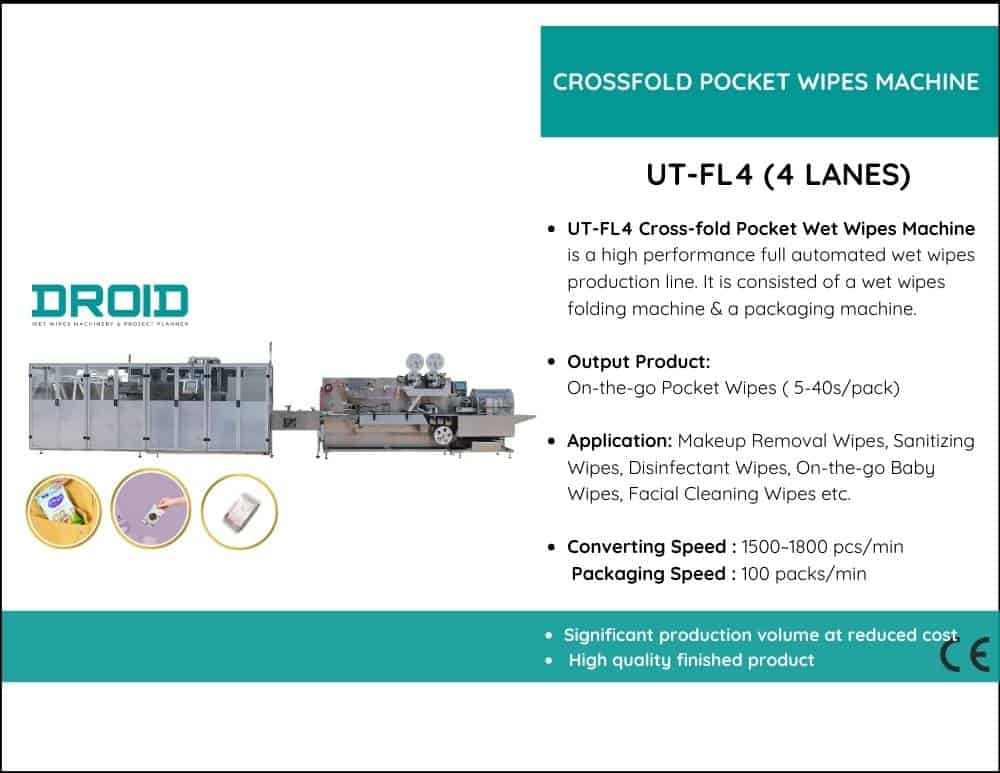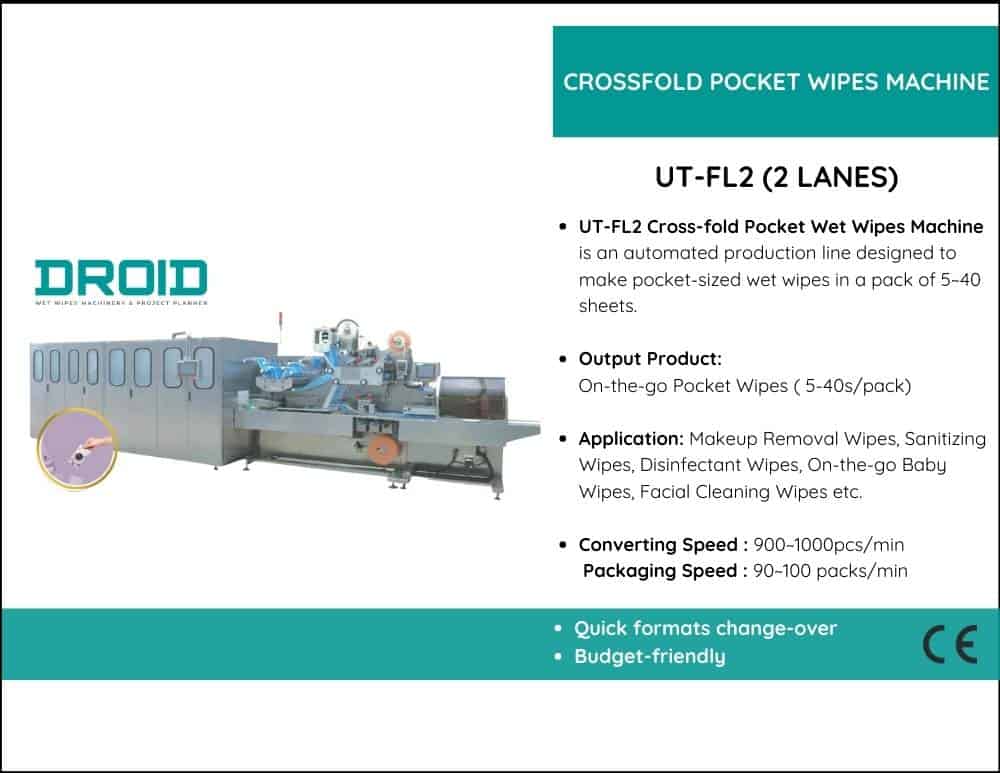At DROID, we recognise that plastic-free packaging is a current commercial reality, rather than a fleeting trend. To handle coated papers, bio-cellulose films, and fibre-based closures with the same effectiveness and dependability as conventional plastic films, our wet wipes machines are designed from the ground up.
1. Paperless Web Management
Our machines’ polished forming radii, vacuum-assisted conveyors, and servo-driven unwinds guarantee that fragile paper films operate without tearing, scratching, or static problems. This ensures constant pack quality and reduces waste.
2. More Complex Sealing Choices
To preserve seam integrity without damaging paper films, we combine ultrasonic sealing modules with precision sealing jaws that operate at low temperatures. For any eco-material recipe, fine-tuning is possible via independent control of Pressure, Temperature, and Time (P-T-t).
3. Sustainable Closure Integration
Fibre-based lids and paper re-closure labels are both supported by DROID machines. Even in humid environments, our applicators provide tight sealing and dependable re-closure with placement precision of ±0.1 mm.
4. Control of Environment and Moisture
Paper films may be stabilised by adding optional micro-enclosures with humidity conditioning around the forming and sealing zones. This enhances sealing dependability and avoids curling, particularly in areas with erratic weather.
5. Quality Assurance in Line
Every pack satisfies the highest QA requirements thanks to inline checkweighing, seal monitoring, and built-in vision inspection. Retailers and authorities can easily verify plastic-free claims thanks to data recording and digital recipe management.
6. Flexibility for the Future
Our equipment’s modular improvements enable quick transitions between traditional plastic and plastic-free films. This adaptability allows producers to cater to a variety of markets while preparing for future sustainability regulations.
DROID provides wet wipes manufacturers with the flexibility to spearhead the transition to genuine, entirely plastic-free packaging by combining engineering accuracy, sustainability-focused features, and international technical support.


